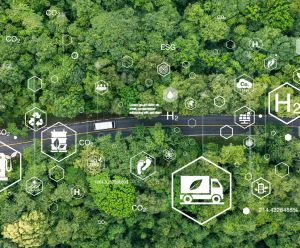
Going full circle with your product cycle

Today’s shoppers are paying more attention to how their purchases impact the environment and expect the same from the companies they support. Based on the Online Purchasing Behavior Report 2024 by DHL, 59 percent of customers globally found sustainability “very” or “quite” important to them.
Often, sustainability seems like a costly practice for businesses to dive into. After all, adopting sustainable practices requires finding suitable systems to replace present practices. Change management requires time and effort, and profit margins may dwindle in the short term.
But in the modern world of environmentally conscious consumers, caring for your bottom line can go hand-in-hand with caring for the planet. By rethinking traditional processes and embracing new innovative practices, companies can balance sustainability and profitability, driving long-term business growth and customer loyalty.
Closing the loop in your product cycle
In the current linear economy, materials are extracted to manufacture products and eventually discarded as waste. Maintaining a circular economy in operations helps to keep materials and products in circulation for as long as possible by minimizing waste, extending product lifespans, and regenerating resources.
Eco-friendliness starts with the product itself. Companies investing in high-quality manufacturing materials create products that are designed to last, reducing the need for frequent replacements and minimizing wastage.
Businesses can also consider integrating environmentally friendly materials in their manufacturing process. While initial investments in sustainable materials may be higher, long-term cost savings can be realized through reduced waste, energy consumption, and regulatory compliance expenses.
Fashion brands like Patagonia and Stella McCartney have adopted this ethos by prioritizing sustainable and ethically sourced materials. Stella McCartney, for example, has committed to using sustainable materials like organic cotton and recycled polyester, showing that high-end products can be both luxurious and environmentally responsible.
Offer maintenance, buyback, trade-in, or upcycling programs
Another effective way to reduce environmental impact is to keep the materials and products within the cycle for as long as possible. This can be implemented through maintenance, reuse, refurbishment, remanufacture, recycling, and composting.
For instance, Rolls-Royce provides maintenance and restoration services for its vehicles. According to statistics from the Ellen MacArthur Foundation, simply extending a product's life by nine months minimizes the need for new resources and reduces the product’s carbon, water, and waste footprint by 20 to 30 percent.
If the customer no longer wishes to keep the product, another possibility is to provide a buyback, trade-in, or upcycling program to collect and recycle old goods. Buyers can return their used products, often in exchange for money or store credit. Retailers then clean up the items and resell them, in-store or online, at a reduced price.
Some retailers encourage customers to return their pre-loved products by offering to refund a percentage of the sale price. For instance, a store buys back a customer’s €3,000 phone for a prorated amount of €1,000 cash, minus any deductions for usage. Companies can also encourage customers to return used items by offering a trade-in deal.
Businesses can also upcycle old products into newer products to be sold. LUSH Cosmetics, for example, recycles its plastic containers when shoppers use up the product and bring it back in-store, packaging new products in these containers to give them a new lease of life.
These initiatives are part of the wider recommerce industry, which is expected to be worth US$84 billion (€75 billion), almost double that of fast fashion, by 2030.
Sustainability is just another word for longevity
Circularity aims to get the most possible value out of all resources, which creates the potential for significant cost savings as efficiency increases. A McKinsey study with the Ellen MacArthur Foundation showed that sustainable approaches to service provision could boost Europe’s resource productivity by three percent by 2030, generating cost savings of €600 billion a year and €1.8 trillion more in other economic benefits.
Ultimately, it is not enough to simply implement green practices—businesses must also communicate them effectively to their customers by highlighting the concrete steps they’re taking to integrate green practices into their services. DHL's Online Purchasing Behavior Report 2024 shows that 63 percent of cross-border shoppers desire more information about the carbon emissions from their e-commerce purchases. Communicating actively with consumers, DHL informs customers about their carbon footprint reduction for each eco-friendly delivery.
With consumers becoming increasingly aware of environmental issues, they are more likely to support businesses that demonstrate a commitment to sustainability. As this trend continues, the longevity of one’s business will likely grow in tandem with the sustainability of its practices. By adopting green practices, companies can attract and retain eco-conscious customers, fostering positive public perception and goodwill within the community.
ALSO WORTH READING

















 English
English